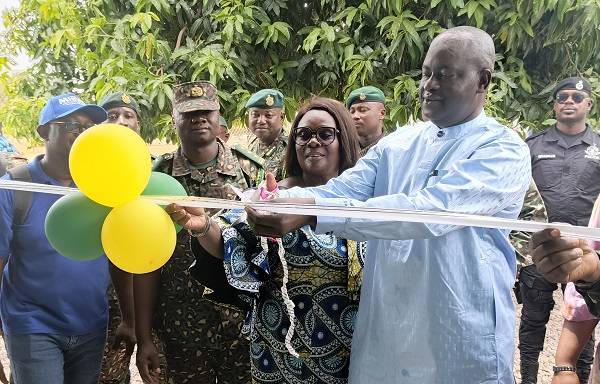Ghana has taken a significant step towards bolstering security along its northern borders with the renovation of five key outposts.
This initiative, undertaken in collaboration with the United States government, aims to improve border management and protect the nation’s territorial integrity.
The project focused on five border posts situated in the Upper East, Upper West, and North East Regions. These include Namoo, Pulimakom, and Mognori in the Upper East Region, along with Bunkpurugu in the North East Region and Hamile in the Upper West Region.
The US$1.6 million project brought about significant upgrades to these border posts. Modern facilities were installed, including the Migration Information and Data Analysis System (MIDAS) to enhance border control processes. Additionally, Water, Sanitation and Hygiene (WASH) facilities were built to ensure proper hygiene and living conditions for Ghana Immigration Service (GIS) personnel stationed at these outposts.
Ghana’s Deputy Minister for the Interior, Naana Quansah Eyiah, expressed her optimism regarding the project’s impact. She highlighted its role in motivating GIS personnel and boosting their ability to tackle security threats at the borders.
Eyiah emphasized the importance of strong borders as the foundation for national security, acting as the first line of defense against transnational crime, irregular migration, and threats to public safety.
The project aligns with the Ghanaian government’s unwavering commitment to fortifying its borders. As Eyiah explained, these efforts are part of a comprehensive national strategy encompassing infrastructure development, technological advancements, personnel training, and improved well-being for border security personnel.
The project was implemented under the “Strengthening Northern Borders of Cote d’Ivoire, Ghana, and Togo” initiative. T
The International Organisation for Migration (IOM) played a crucial role in executing the project with financial backing from the Bureau of International Narcotics and Law Enforcement Affairs of the U.S. government.
The Controller General of the GIS, Kwame Asuah Takyi, expressed his gratitude to the IOM for their successful implementation.
He emphasized the project’s potential to not only facilitate the smooth movement of legitimate travelers but also enhance border operations aimed at curbing irregular migration.
Takyi further highlighted the project’s role in deterring criminal activities, including the movement of criminals and terrorists, while enabling the implementation of necessary health precautions at the borders.
Looking ahead, the IOM plans to extend similar renovations to four additional border posts, including the Paga border.
This collaborative effort between Ghana, the United States, and the IOM signifies a significant step towards a more secure Ghana and demonstrates the effectiveness of international cooperation in addressing critical border security challenges.

